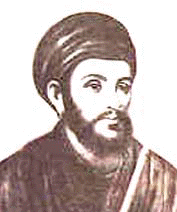|
வீரமாமுனிவர்
Father Constantine Joseph Beschi
எழுதியவர்:
Dr.Ramani Naidu
 வீரமாமுனிவரின்
இயற்பெயர்
கான்ஸ்டன்டைன்
Joseph பெஸ்கி
என்பதாகும்.
அவர் 8.11.1680
அன்று
இத்தாலியில்
காஸ்திகிலியோன்
என்ற
இடத்தில்
பிறந்தவர்.
1709ல்
சேசுசபைப்
பாதிரியாரானபின்
-1710ல்
தமிழகத்துக்கு
வந்தார்.
இவர்
காவியம்,
பிரபந்தம்,
உரைநடை
அகராதி,
இலக்கணம்,
மொழிபெயர்ப்பு
என்று
பலதுறைகளிலும்
முத்திரை
பதித்தவர்.
சதுரகராதி
கொண்டு
நிகண்டுக்கு
ஒரு
மாற்றைக்
கொண்டு
வந்தவர்.
தொன்னூல்
விளக்கம்
என்ற
நூலில்
எழுத்து,
சொல்,
பொருள்,
யாப்பு,
அணி ஆகிய
ஐந்து
இலக்கணங்களைத்
தொகுத்தார். வீரமாமுனிவரின்
இயற்பெயர்
கான்ஸ்டன்டைன்
Joseph பெஸ்கி
என்பதாகும்.
அவர் 8.11.1680
அன்று
இத்தாலியில்
காஸ்திகிலியோன்
என்ற
இடத்தில்
பிறந்தவர்.
1709ல்
சேசுசபைப்
பாதிரியாரானபின்
-1710ல்
தமிழகத்துக்கு
வந்தார்.
இவர்
காவியம்,
பிரபந்தம்,
உரைநடை
அகராதி,
இலக்கணம்,
மொழிபெயர்ப்பு
என்று
பலதுறைகளிலும்
முத்திரை
பதித்தவர்.
சதுரகராதி
கொண்டு
நிகண்டுக்கு
ஒரு
மாற்றைக்
கொண்டு
வந்தவர்.
தொன்னூல்
விளக்கம்
என்ற
நூலில்
எழுத்து,
சொல்,
பொருள்,
யாப்பு,
அணி ஆகிய
ஐந்து
இலக்கணங்களைத்
தொகுத்தார்.
கொடுந்தமிழ்
இலக்கணம்
என்ற
நூலில்
தமிழில்
முதல்முதலாகப்
பேச்சுத்தமிழை
விவரிக்க
முனைந்தவர்.
வழக்கும்
செய்யுளுமே
ஒரு
மொழியின்
இலக்கணமாக
அமையுமென்றாலும்
இரட்டை
வழக்கு
மொழியான
தமிழில்
பேச்சுத்
தமிழுக்கு
இலக்கணம்
அமைந்திராத
காலத்தில்
கொடுந்தமிழ்
இலக்கணம்
வகுத்தது
சிறப்பான
முயற்சியே
எனல்
வேண்டும்.
கிருத்துவம்
தமிழ்
மொழிக்குச்
செய்த
சிறந்த
சேவைகளில்
ஒன்றாக
அமைந்தது
இந்த
நூல்
என்றால்
மிகையாகாது.
எனினும்
இன்றைய
கிருத்துவத்
தமிழ்
தனக்கென
ஒரு வகை
முறைமையை
வகுத்துக்
கொண்டு
வழக்கில்
இருக்கும்
பேச்சுத்
தமிழும்
அல்லாத
எழுத்துத்
தமிழும்
அல்லாத
ஒரு
வகைத்
தமிழைக்
கொண்டிருப்பது
குறித்துக்
கிருத்துவ
நிறுவனங்கள்
மறுமதிப்பீடு
செய்தல்
கிருத்துவத்துக்கும்
தமிழுக்கும்
நலன்
பயக்கும்
என்பது
எனது
கருத்து.
திருக்குறளில்
அறத்தையும்
பொருளையும்
லத்தீன்
மொழியில்
பெயர்த்தவர்
வீரமாமுனிவர்.
உரைநடையில்
வேத
விளக்கம்,
வேதியர்
ஒழுக்கம்,
ஞானக்
கண்ணாடி,
செந்தமிழ்
இலக்கணம்,
பரமார்த்த
குரு கதை,
வாமன்
கதை கிய
நூல்களைப்
படைத்தவர்.
இதில்
பரமார்த்த
குரு
கதையானது
தமிழில்
முதல்
முதலாக
வந்த
ஹாஸ்ய
இலக்கியம்
என்பதைச்
சொல்லத்தானாக
வேண்டும்.
திருக்காவல்
ஊர்க்
கலம்பகம்,
கித்தேரி
அம்மன்
அம்மானை
இவரது
பிற
நூல்கள்.
காவியத்தில்
தேம்பாவணி
இவர்
இயற்றியது.
மூன்று
காண்டங்களில்
36
படலங்களைக்
கொண்டு
மொத்தமாக
3615
விருத்தப்
பாக்களால்
னது
இந்தக்
காவியம்.
இதிலும்
ஒரு
சிறப்பு
இருக்கிறது.
பின்னிணைப்பாக
யாப்பு
வடிவங்களை
அளித்திருக்கிறார்.
இவருடைய
வருணணைத்
திறனுக்குக்
கீழ்க்காணும்
பாடல்
சாட்சியாகிறது.
பயனினால்
மறைநூல்
ஒக்கும்
பகலினை
மணியால்
ஒக்கும்
வியனினால்
உலகம்
ஒக்கும்
வேலியால்
கன்னி
ஒக்கும்
முயலினால்
அலையை
ஒக்கும்
முனினி
ஒன்னாக்
கொக்கும்
நகரினை
ஒக்கும்
வீடே
இந்தப்
பாடல்
ஜெருசலேம்
நகரை
வர்ணிக்கிறது.
காப்பியத்
தலைவர்
வருணணை
வளவனாரை
வர்ணிக்கும்
இந்தப்
பாடலின்
பாங்கில்
வெளிப்படுகிறது.
அன்பு
வைத்த
உயிர்நிலை
அ·திலார்க்
கென்பு
தோலுடல்
போர்த்ததென
றன்புடை
இன்பு
தோய்த்த
நிலையெனத்
தானிவன்
துன்பு
காய்ந்த
உயிர்த்துணை
யினான்
ஒலிக்குறிப்புகளைத்
தம்
பாடலில்
எப்படி
வெளிப்படுத்துகிறார்
பாருங்கள்.
வளனார்
தேவத்தாயார்
திருமணம்
குறித்தது
இந்தப்
பாடல்.
முடுகு
முரசொலி
முடுகு
முழவொலி
முடுகு
முருகொலி
முடிவிலாக்
கடுகு
பறையொலி
கடுகு
கலமொலி
கடுகு
கடலொலிக
னிவெழாத்
தொடுகு
குழலொளி
கொடுகு
குரலொலி
தொடுகு
துதியொலி
தொடுதலாற்
படுகு
முகிலொலி
படுகு
கடலொலி
படுத
லிலமண
மாயதே.
|
Costanzo Giuseppe Beschi
Courtesy Catholic Encyclopaedia
"Born at Castiglione in the Venetian Republic,
1680; died at Manapar c. 1746. He entered the
Society of Jesus in 1698, and went to the Mandura
mission in 1710, during nearly forty years of
apostolic life proving himself a worthy successor
of the founder of the Mandura Mission, the
celebrated Roberto de' Nobili. Once he barely
escaped suffering death for the Christian religion.
Though primarily a missionary and always at the
head of a district, he is better know as one of
the classical writers of Tamil literature.
No sooner had he arrived in India than he began
the study of Sanskrit, Telugu, and especially of
Tamil. Thanks to his genius and indefatigable
industry, he mastered the Tamil grammar in five
years, and for the next twenty years made so
thorough a study of the whole field of Tamil
literature that the native men of letters bowed to
him as their master.
He composed a grammar of High Tamil, and was the
first to write a grammar of Low Tamil (the common
dialect) which still remains the foundation of
scientific Tamil philology. He is also the complier
of several Tamil dictionaries, among them the
quadruple lexicon containing words, synonyms,
categories of words, and rhymes; a Tamil-Latin and
Latin-Tamil-Portuguese dictionary.
He wrote several ascetical books in Tamil,
especially doctrinal instructions for the use of
the native catechists; also controversial tracts
against the Danish Lutheran missionaries who sought
to gain a foothold in the Mandura Mission. Beschi
is, however, best known as a Tamil poet. In a poem
of 1100 stanzas, "Kittêri ammalle saritiram"
he sings the praises of the martyr St. Quiteria
(not St. Catherine, as some writers have mistakenly
asserted). His greatest poetical work is the
"Tembavani" (The Unfading Garland), one of the
Tamil classics.
This Tamil "Divina Comedia" is divided into
thirty-six cantos, containing 3,615 stanzas. "It
is," says Baumgartner, "the noblest epic poem in
honor of St. Joseph written in any literature, East
or West. In one of the most difficult languages of
southern India Beschi produced a poem which for
richness and beauty of language. for elegance of
meter, popular treatment, and true poetical
conception and execution, is the peer of the native
classics; in nobility of thought and
subject-matter, it is as superior to them as the
harmonious civilization of Christianity rises above
the confused philosophical dreams and ridiculous
fables of idolatry."
Another poem "Paramartaguru Kadey" (the
adventures of Guru Paramarta), in which he
delightfully satirizes the foibles and conceited
ignorance of the native gurus (heathen teachers) is
the most entertaining book in Tamil literature,
bubbling over with wit and humor.
It has also been translated into English,
French, German, Italian, and Canarese. Graesse and
Babington, editors respectively of the German and
English translations. seem to be ignorant both of
Beschi's authorship of the book and of his great
importance to the literature of Southern India, for
they make no mention of his name.
The tradition that he was at one time prime
minister to a native raja is not sufficiently
authenticated. In 1744, he was rector of the
mission of Manapar, where he died. His memory lives
to this day in Southern India."
|